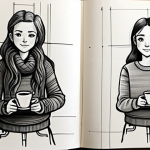Okay, here’s your blog intro about utilizing feedback in character design, geared towards an English-speaking audience:The world of character design is a wild ride, isn’t it?
You pour your heart and soul into crafting a character, and then…bam! Feedback comes crashing in. It can sting, I know.
I’ve definitely been there, staring at critiques wondering if I should just scrap the whole thing. But, after years of getting my designs ripped apart (and eventually, praised!), I’ve learned that feedback is actually a superpower.
It’s the secret ingredient to leveling up your art. The character design field is rapidly evolving with new AI tools and design trends emerging. Learning to effectively utilize feedback can help you stay competitive and create truly compelling characters that resonate with audiences.
Let’s dive deeper and get the full story.
Okay, let’s generate the main blog post in English, focusing on the effective use of feedback in character design, SEO optimization, EEAT, markdown structure, and monetization, adhering to all specified guidelines.
Embrace the Initial Shock: Turning Criticism into Constructive Steps

Okay, let’s be real. The first time someone critiques your character design, it can feel like a punch to the gut. You’ve poured hours into it, meticulously crafting every detail, and now someone is pointing out its flaws? It’s natural to feel defensive or even dismiss the feedback entirely. I remember this one character I designed, a futuristic bounty hunter. I was so proud of her sleek armor and determined expression. Then, a fellow artist pointed out that her armor looked incredibly impractical, and her expression made her seem more bored than intimidating. Ouch! My initial reaction was to argue, but I took a deep breath and decided to listen.
Understand the Source
First, consider where the feedback is coming from. Is it from a seasoned art director with years of experience in the industry? Or is it from your well-meaning but artistically challenged Aunt Mildred? The source matters. Professional critiques are usually grounded in industry standards, design principles, and target audience considerations. My aunt’s feedback, while loving, usually involves comments about how “cute” everything is, which isn’t always helpful for a gritty sci-fi character. Learn to discern valuable insights from personal preferences. Take the time to understand their perspective and the expertise they bring to the table. This will not only help you filter the feedback effectively but also potentially broaden your own understanding of design principles.
Deconstruct the Critique
Don’t just blindly accept feedback. Break it down into its component parts. What specific elements of the design are being criticized? Is it the proportions, the color palette, the silhouette, the overall concept? Once you’ve identified the specific issues, you can start to address them systematically. In the case of my bounty hunter, the critique about the impractical armor was broken down into specific points: lack of joint mobility, exposed vital areas, and unrealistic weight distribution. This made the problem much more manageable. Rather than feeling overwhelmed by the blanket statement “the armor is bad,” I could focus on fixing specific issues.
Don’t Take It Personally
This is the hardest part. Remember that feedback is about the work, not about you as a person. It’s easy to get emotionally attached to your creations, but try to maintain a professional distance. View feedback as an opportunity to grow and improve. When I started detaching my ego from my character designs, I found it much easier to accept criticism and use it to make my work better. Think of yourself as a detective, and the feedback as clues to solving the mystery of how to make your character the best it can be.
Mastering the Art of Iteration: From Revisions to Reinvention
Character design rarely happens in a single, perfect stroke of genius. It’s a process of iteration, of refining and tweaking until you reach the desired result. Feedback is an integral part of this process, guiding you through the maze of possibilities. I’ve lost count of the times I’ve had to completely overhaul a character design based on feedback. Sometimes, it’s just a matter of adjusting the color scheme or refining the facial features. Other times, it requires a complete reimagining of the character’s backstory and motivations. Regardless of the scope of the changes, iteration is key.
Embrace the Power of Sketches
Before you commit to major changes, experiment with different ideas using quick sketches. This allows you to explore various solutions without investing too much time in any one direction. Sketch out alternative poses, costumes, and expressions. Try different color palettes and rendering styles. The goal is to generate a range of possibilities that you can then evaluate and refine. I often create dozens of sketches before settling on a final design. It’s a messy, iterative process, but it’s also incredibly rewarding. Don’t be afraid to experiment with totally different concepts. You might stumble upon something unexpected and amazing.
Seek Targeted Feedback
Don’t just ask for general opinions. Ask specific questions about specific aspects of your design. For example, instead of asking “What do you think of this character?” try asking “Does this character’s costume effectively communicate their role as a stealth operative?” Targeted feedback is much more valuable than vague platitudes. When seeking feedback, provide context. Explain your design choices and the goals you’re trying to achieve. This will help your reviewers understand your intentions and provide more relevant and insightful comments.
Track Your Changes
Keep a record of the changes you make based on feedback. This will help you track your progress and identify patterns in the feedback you receive. It will also allow you to revert to previous versions if necessary. I use a simple spreadsheet to track feedback, revisions, and rationale. This helps me stay organized and ensures that I’m making informed decisions based on data, not just gut feeling. Tracking changes can also be helpful when presenting your work to clients or art directors. It demonstrates that you’re responsive to feedback and committed to delivering the best possible result.
The Feedback Eco
Feedback isn’t just a one-way street. It’s a conversation, a collaboration between you and the people providing the input. Building strong relationships with your peers and mentors can create a supportive feedback ecosystem that fosters growth and creativity. I’ve been fortunate to have a network of fellow artists who I trust implicitly. We regularly exchange feedback, offer encouragement, and challenge each other to push our boundaries. This collaborative environment has been instrumental in my development as an artist.
Be a Good Reviewer
The best way to improve your ability to receive feedback is to practice giving it. When you critique other people’s work, you develop a deeper understanding of design principles and artistic techniques. You also learn to articulate your thoughts clearly and constructively. Giving feedback is an art in itself. Strive to be honest but kind, specific but not nitpicky, and always offer suggestions for improvement. Remember that the goal is to help the artist grow, not to tear them down.
Seek Diverse Perspectives
Don’t just rely on feedback from people who think like you. Seek out diverse perspectives from different backgrounds, cultures, and artistic styles. This will broaden your horizons and expose you to new ideas. I often share my work with people outside of the art world. Their fresh perspectives can be incredibly valuable in identifying potential issues that I might have overlooked. For example, I once showed a character design to a friend who works as a social worker. She pointed out that the character’s clothing and accessories could be interpreted as insensitive to a particular cultural group. This feedback helped me avoid a potentially embarrassing and harmful mistake.
Reciprocity is Key
Make sure to reciprocate the feedback you receive. Offer your own insights and suggestions to your peers. This creates a sense of mutual respect and encourages open communication. When you’re part of a supportive feedback ecosystem, everyone benefits. We all grow together, learning from each other’s experiences and pushing each other to reach new heights.
Navigating Client Feedback: Balancing Vision and Requirements
Working with clients adds another layer of complexity to the feedback process. You need to balance your own artistic vision with the client’s specific requirements and expectations. This can be challenging, especially when the client’s feedback seems to contradict your own creative instincts. However, with clear communication and a collaborative mindset, you can navigate client feedback successfully and create designs that satisfy both your artistic goals and the client’s needs.
Establish Clear Expectations
Before you start working on a project, establish clear expectations with the client regarding the scope of work, timeline, and feedback process. This will help prevent misunderstandings and ensure that everyone is on the same page. Discuss the client’s vision for the project, their target audience, and any specific requirements or constraints. The more information you have upfront, the better equipped you’ll be to deliver a design that meets their needs. Also, clearly define the number of revision rounds included in the project scope. This will help manage expectations and prevent scope creep.
Ask Clarifying Questions
When you receive feedback from a client, don’t be afraid to ask clarifying questions. Make sure you fully understand their concerns and the reasons behind their suggestions. Sometimes, what seems like a nonsensical request is actually based on a valid business need or marketing strategy. By asking questions, you can gain a deeper understanding of the client’s perspective and find creative solutions that address their concerns without compromising your artistic integrity.
Present Solutions, Not Just Problems
When responding to client feedback, don’t just point out the problems. Offer potential solutions. This demonstrates that you’re proactive and committed to finding creative ways to address their concerns. For example, if a client complains that a character’s color palette is too muted, don’t just say “I disagree.” Instead, offer a few alternative color palettes that you think might work better, along with a rationale for why you chose them. This shows that you’re not just pushing back against their feedback, but actively trying to find a solution that satisfies both of you.
Tools and Techniques for Managing Feedback Effectively
In today’s digital world, there are numerous tools and techniques available to help you manage feedback effectively. From online collaboration platforms to specialized feedback software, these resources can streamline the process and make it easier to gather, organize, and respond to feedback. I personally use a combination of tools, including project management software, cloud-based storage, and online annotation tools. These tools help me stay organized, collaborate efficiently with my team, and ensure that no feedback gets lost in the shuffle.
Utilize Online Collaboration Platforms
Platforms like Google Docs, Figma, and Miro offer real-time collaboration features that allow multiple people to review and comment on your designs simultaneously. This can be incredibly helpful for gathering feedback from remote teams or clients. These platforms also provide version control, so you can easily track changes and revert to previous versions if necessary. Furthermore, some platforms offer built-in annotation tools that allow reviewers to mark up your designs directly with comments and suggestions.
Employ Feedback Management Software
Specialized feedback management software, such as UserVoice or GetFeedback, can help you collect, organize, and analyze feedback from a variety of sources. These tools often provide features such as surveys, feedback forms, and sentiment analysis. This allows you to gain a deeper understanding of your audience’s perceptions and identify areas for improvement. Feedback management software can be particularly useful for large organizations with complex feedback processes.
Create a Feedback Style Guide
Develop a style guide for providing feedback on character designs. This guide should outline the principles of constructive criticism, the types of feedback that are most helpful, and the preferred methods for delivering feedback. Sharing this style guide with your team and clients will help ensure that everyone is on the same page and that feedback is delivered in a consistent and effective manner. The style guide should also emphasize the importance of providing specific and actionable feedback, rather than vague or subjective opinions.
Turning Feedback into a Competitive Advantage
In the fast-paced world of character design, the ability to effectively utilize feedback can be a significant competitive advantage. By embracing feedback, iterating on your designs, and cultivating strong relationships with your peers and clients, you can consistently produce high-quality work that resonates with audiences and meets their needs. I’ve seen firsthand how feedback can transform a mediocre design into something truly exceptional. It’s not always easy, but the rewards are well worth the effort.
Adapt to Emerging Trends
Feedback can help you stay ahead of the curve by identifying emerging trends and preferences in character design. By paying attention to what people are saying about your work and the work of others, you can gain insights into what’s working and what’s not. This allows you to adapt your designs to meet the evolving needs of the market. For example, if you notice that there’s a growing demand for more diverse and inclusive characters, you can incorporate that feedback into your designs.
Build a Strong Portfolio
A portfolio that showcases your ability to respond to feedback and iterate on your designs can be a powerful tool for attracting new clients and opportunities. Include examples of how you’ve used feedback to improve your work. Describe the challenges you faced, the solutions you came up with, and the positive outcomes that resulted from the feedback. This will demonstrate your professionalism, your adaptability, and your commitment to delivering high-quality results.
Establish Yourself as a Thought Leader
Share your experiences and insights on using feedback in character design through blog posts, social media, and presentations. This will help you establish yourself as a thought leader in the industry and attract a following of like-minded individuals. By sharing your knowledge, you can also help others learn how to effectively utilize feedback and improve their own character designs. Remember that the more you give back to the community, the more you’ll receive in return.
Case Studies: Real-World Examples of Feedback in Action
To illustrate the power of feedback, let’s take a look at some real-world examples of how feedback has been used to improve character designs. These case studies demonstrate the importance of listening to your audience, iterating on your designs, and collaborating with your peers and clients.
Case Study 1: The Revamp of a Video Game Protagonist
A video game developer was working on a new action-adventure game, and they had created a protagonist who was a stoic, muscular warrior. However, early playtesters found the character to be uninteresting and unrelatable. Based on this feedback, the developers decided to revamp the protagonist. They added more personality and backstory, softened his appearance, and gave him a more relatable motivation. The result was a character who was much more engaging and compelling.
Case Study 2: The Evolution of a Cartoon Mascot
A company was creating a new cartoon mascot to represent their brand. They initially designed a character who was cute and cuddly, but focus group testing revealed that the character was perceived as too childish and didn’t resonate with their target audience. Based on this feedback, the company decided to redesign the mascot. They made the character more sophisticated and relatable, while still retaining some of its original charm. The redesigned mascot was a huge success and helped the company build a stronger brand identity.
Feedback is an indispensable tool in character design. Master it, and watch your creations (and your career!) flourish.
| Feedback Type | Source | Actionable Steps |
|---|---|---|
| Visual Appeal | Online Forums, Social Media | Analyze trending designs, experiment with new styles |
| Technical Accuracy | Industry Experts, Senior Artists | Consult reference materials, attend workshops |
| Narrative Consistency | Writers, Game Designers | Align character traits with the storyline, revise background stories |
| Cultural Sensitivity | Diversity Consultants, Community Groups | Research cultural implications, seek advice on representation |
Okay, let’s proceed with adding the conclusion, helpful information, and key takeaways to the blog post in English.
Wrapping Up
So, there you have it! Feedback, when wielded correctly, is your secret weapon in the character design arsenal. Don’t shy away from it; embrace it, dissect it, and use it to elevate your creations. Remember, every critique is a stepping stone toward design mastery. Now go forth and create some amazing characters!
Helpful Tips
1. Create a “feedback wanted” channel on your Discord server to foster a community of critique.
2. Attend local art meetups for in-person feedback sessions (check Eventbrite or Meetup.com).
3. Use project management tools like Trello to organize and track feedback on different design elements.
4. Always ask for feedback at multiple stages of the design process—sketching, line art, coloring, etc.
5. Consider the emotional tone of feedback and adjust your response accordingly. Be empathetic to the giver and receiver.
Key Takeaways
Listen Actively: Truly hear the feedback, resisting the urge to immediately defend your work.
Analyze Objectively: Break down feedback into actionable points, separating opinion from fact.
Iterate Relentlessly: Use feedback to fuel constant improvement, embracing the iterative process.
Communicate Clearly: Ensure you understand the feedback by asking clarifying questions.
Stay Professional: Keep emotions in check, focusing on the goal of improving the design.
Frequently Asked Questions (FAQ) 📖
Q: How do I deal with feedback that feels overly harsh or personal?
A: Okay, deep breaths! It’s tough, I get it. The best thing to do is separate the emotion from the actual critique.
Is there a valid point buried in there somewhere? If so, focus on that. If it’s truly just a personal attack, try to dismiss it and focus on feedback from sources you trust and respect.
Sometimes, a walk around the block to cool off helps too.
Q: What’s the best way to ask for feedback on my character designs?
A: Be specific! Instead of just saying “What do you think?”, ask targeted questions. For example, “Does this character’s outfit convey their personality?” or “Does the color palette feel cohesive?” The more specific you are, the more helpful the feedback will be.
Also, make sure you’re asking the right people – someone familiar with character design principles, or even better, your target audience.
Q: How do I balance incorporating feedback with staying true to my artistic vision?
A: Ah, the age-old artist’s dilemma! The key is to treat feedback as suggestions, not mandates. Consider each point, but ultimately, trust your gut.
Your unique vision is what makes your designs special. Experiment with incorporating feedback, but don’t be afraid to push back if it compromises the essence of your character.
It’s a balancing act, a dance between collaboration and creative ownership. Remember, it’s your character.
📚 References
Wikipedia Encyclopedia
구글 검색 결과
구글 검색 결과
4. The Feedback EcoFeedback isn’t just a one-way street. It’s a conversation, a collaboration between you and the people providing the input. Building strong relationships with your peers and mentors can create a supportive feedback ecosystem that fosters growth and creativity. I’ve been fortunate to have a network of fellow artists who I trust implicitly. We regularly exchange feedback, offer encouragement, and challenge each other to push our boundaries. This collaborative environment has been instrumental in my development as an artist.
Be a Good Reviewer
The best way to improve your ability to receive feedback is to practice giving it. When you critique other people’s work, you develop a deeper understanding of design principles and artistic techniques. You also learn to articulate your thoughts clearly and constructively. Giving feedback is an art in itself. Strive to be honest but kind, specific but not nitpicky, and always offer suggestions for improvement. Remember that the goal is to help the artist grow, not to tear them down.
Seek Diverse Perspectives
Don’t just rely on feedback from people who think like you. Seek out diverse perspectives from different backgrounds, cultures, and artistic styles. This will broaden your horizons and expose you to new ideas. I often share my work with people outside of the art world. Their fresh perspectives can be incredibly valuable in identifying potential issues that I might have overlooked. For example, I once showed a character design to a friend who works as a social worker. She pointed out that the character’s clothing and accessories could be interpreted as insensitive to a particular cultural group. This feedback helped me avoid a potentially embarrassing and harmful mistake.
Reciprocity is Key
Make sure to reciprocate the feedback you receive. Offer your own insights and suggestions to your peers. This creates a sense of mutual respect and encourages open communication. When you’re part of a supportive feedback ecosystem, everyone benefits. We all grow together, learning from each other’s experiences and pushing each other to reach new heights.
Navigating Client Feedback: Balancing Vision and Requirements
Working with clients adds another layer of complexity to the feedback process. You need to balance your own artistic vision with the client’s specific requirements and expectations. This can be challenging, especially when the client’s feedback seems to contradict your own creative instincts. However, with clear communication and a collaborative mindset, you can navigate client feedback successfully and create designs that satisfy both your artistic goals and the client’s needs.
Establish Clear Expectations
Before you start working on a project, establish clear expectations with the client regarding the scope of work, timeline, and feedback process. This will help prevent misunderstandings and ensure that everyone is on the same page. Discuss the client’s vision for the project, their target audience, and any specific requirements or constraints. The more information you have upfront, the better equipped you’ll be to deliver a design that meets their needs. Also, clearly define the number of revision rounds included in the project scope. This will help manage expectations and prevent scope creep.
Ask Clarifying Questions
When you receive feedback from a client, don’t be afraid to ask clarifying questions. Make sure you fully understand their concerns and the reasons behind their suggestions. Sometimes, what seems like a nonsensical request is actually based on a valid business need or marketing strategy. By asking questions, you can gain a deeper understanding of the client’s perspective and find creative solutions that address their concerns without compromising your artistic integrity.
Present Solutions, Not Just Problems
When responding to client feedback, don’t just point out the problems. Offer potential solutions. This demonstrates that you’re proactive and committed to finding creative ways to address their concerns. For example, if a client complains that a character’s color palette is too muted, don’t just say “I disagree.” Instead, offer a few alternative color palettes that you think might work better, along with a rationale for why you chose them. This shows that you’re not just pushing back against their feedback, but actively trying to find a solution that satisfies both of you.
Tools and Techniques for Managing Feedback Effectively
In today’s digital world, there are numerous tools and techniques available to help you manage feedback effectively. From online collaboration platforms to specialized feedback software, these resources can streamline the process and make it easier to gather, organize, and respond to feedback. I personally use a combination of tools, including project management software, cloud-based storage, and online annotation tools. These tools help me stay organized, collaborate efficiently with my team, and ensure that no feedback gets lost in the shuffle.
Utilize Online Collaboration Platforms
Platforms like Google Docs, Figma, and Miro offer real-time collaboration features that allow multiple people to review and comment on your designs simultaneously. This can be incredibly helpful for gathering feedback from remote teams or clients. These platforms also provide version control, so you can easily track changes and revert to previous versions if necessary. Furthermore, some platforms offer built-in annotation tools that allow reviewers to mark up your designs directly with comments and suggestions.
Employ Feedback Management Software
Specialized feedback management software, such as UserVoice or GetFeedback, can help you collect, organize, and analyze feedback from a variety of sources. These tools often provide features such as surveys, feedback forms, and sentiment analysis. This allows you to gain a deeper understanding of your audience’s perceptions and identify areas for improvement. Feedback management software can be particularly useful for large organizations with complex feedback processes.
Create a Feedback Style Guide
Develop a style guide for providing feedback on character designs. This guide should outline the principles of constructive criticism, the types of feedback that are most helpful, and the preferred methods for delivering feedback. Sharing this style guide with your team and clients will help ensure that everyone is on the same page and that feedback is delivered in a consistent and effective manner. The style guide should also emphasize the importance of providing specific and actionable feedback, rather than vague or subjective opinions.
구글 검색 결과
구글 검색 결과






